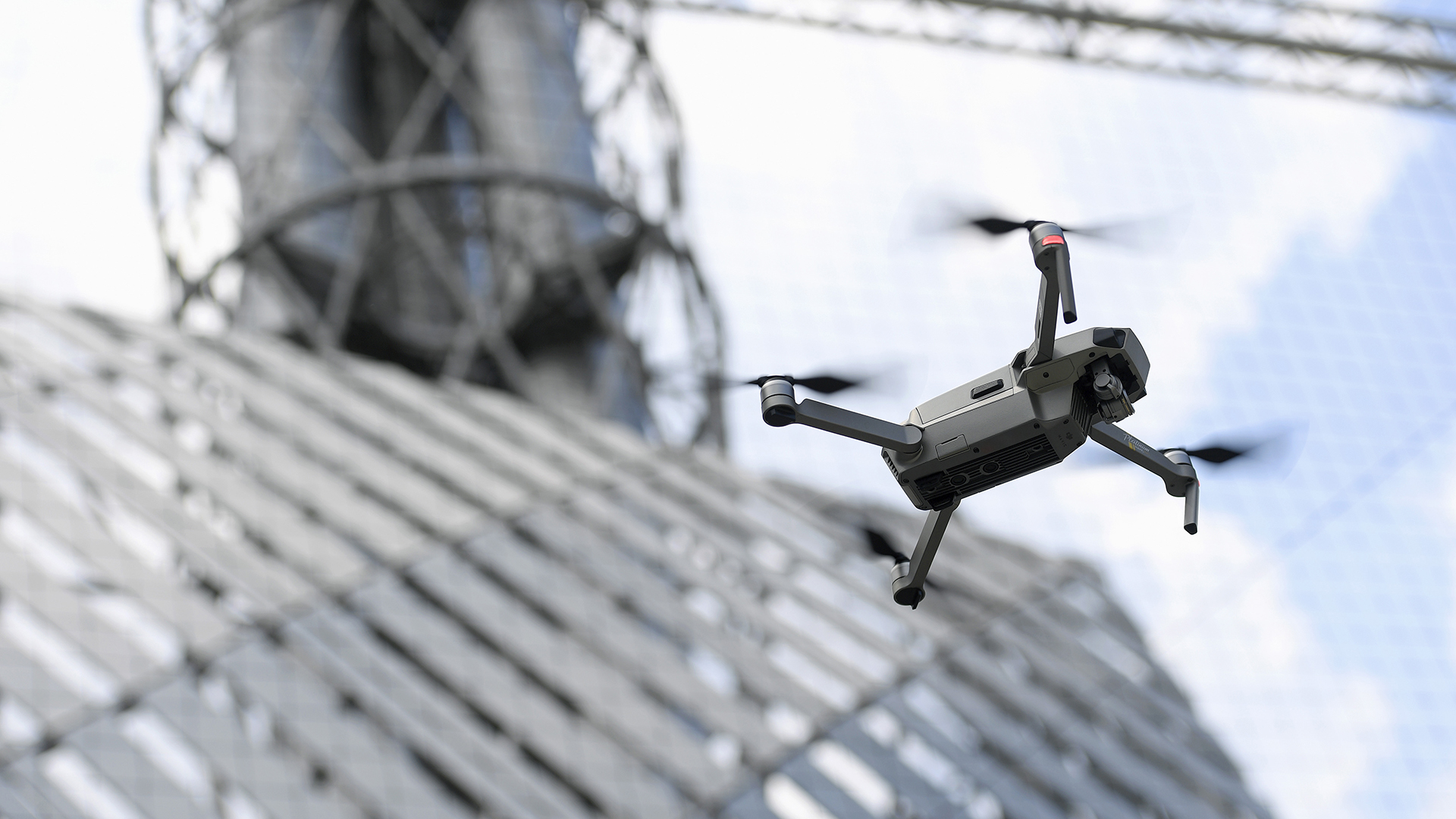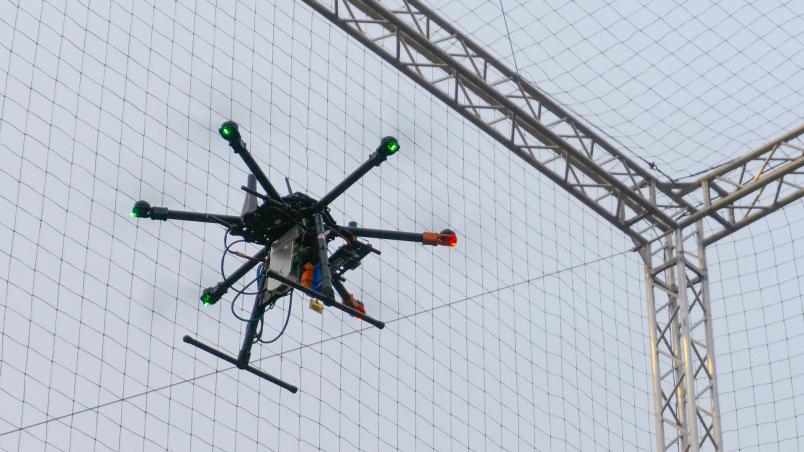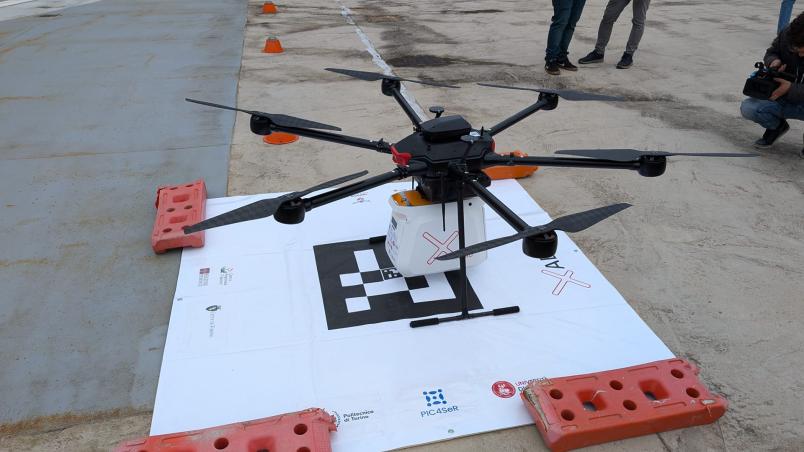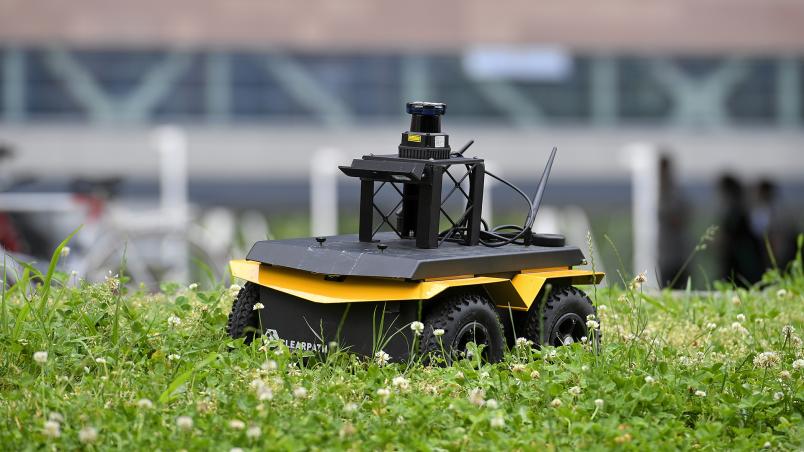
Service drones in urban contexts

An urban environment populated by drones (aerial and/or on the ground) at the service of citizens to perform rapid response emergency tasks, goods transport, and monitoring. This is not the scenario of a science fiction movie nor novel, but a fragment of the future imagined by researchers at PIC4SeR, the interdepartmental centre for service robotics at Politecnico, which brings together the multidisciplinary expertise of five different departments of the university to develop robots and technological solutions usable in various scenarios.
Following PIC4SeR's philosophy, technologies must adapt to the context and purpose of those who use them, whether it's optimizing cultivation methods in agriculture, helping rescuers in emergency situations, exploring complex environments, or assisting people with disabilities.
In this sense, the urban context offers the ideal environment to imagine new uses for service robotics technologies, but it also represents a great challenge for improving these technologies and achieving new standards of safety and human-usability for remotely commanded vehicles.
PIC4SeR is particularly engaged in research on drones that provide support in rescue operations: the field of security and assistance to first responders is one of the application areas for drones in the urban context.
"To give a simple and practical example," explains Professor Marcello Chiaberge, lecturer in the Department of Electronics and Telecommunications (DET) and coordinator of PIC4SeR, "Let's think of a Fire Brigade intervention. At the time of the emergency call, even before the vehicles arrive on site, an aerial drone could fly over the intervention scenario with thermal instruments and cameras, recording and transmitting a large amount of information to the operations center, to adequately inform the staff, who would then arrive prepared for targeted operations and with an even higher level of safety."

This is not a dream, but something immediately achievable with available technologies, although work is needed, especially from the perspective of flight authorizations for the mission.
Regarding aerial drones or UAVs (Unmanned Aerial Vehicles), the compeling ENAC (Italian Civil Aviation Authority) safety regulations require designing drones with redundant electronic and mechanical systems, capable of preventing the vehicle from crashing in case of failure, and with the possibility for air traffic management to take remote control of the vehicles in case of lack of response to commands or imminent danger.
PIC4SeR is already working on these issues with the INDOOR project, carried out in collaboration with the DOT Foundation (Organ Donation and Transplantation) for the transport of transplant organs and biological materials using UAV systems. In October last year, the first experimental flight of a drone transporting inert substances simulating biological samples, stored inside a capsule designed for this purpose, took place at the Molinette hospital in Turin. The use of drones in this field could bring about a profound change in the national healthcare system, with a significant reduction in costs and greater safety in completing organ transport and transplantation operations.

The operation of ground drones (rovers), on the other hand, faces other significant challenges, although not insurmountable. Moving in ordinary traffic, rovers would have to maintain very high safety standards and, above all, learn to "talk" to road signs, with other service vehicles, and with the traffic control center, to avoid creating problems for civilian vehicles or obstructing emergency vehicles. To do this, vehicle-to-vehicle and vehicle-to-infrastructure communication systems, already existing and partly used for cars in ordinary traffic, would need to be implemented in the rovers.
If these vehicles were not to be kept on the road, then action would need to be taken on infrastructure, for example, making pavements wider and safer to also accommodate rover routes, obviously without creating dangers for pedestrians. In this case too, the presence of rovers would reduce transport costs and automate the flow of goods delivery, for example, medicines.
The issues of safety in the circulation of drones and rovers in the urban context are related to the safety of navigation systems. Within PIC4SeR, different competences come together, including those of DET Professor Fabio Dovis’ group, who works on satellite-based navigation systems (GNSS), such as GPS and Galileo, which are being modernized with new signals and constellations. Using these new signals and appropriate signal processing algorithms, it is possible to guide remotely commanded vehicles along their routes in a safe manner, also protecting them from external interference signals. The danger that "spoofing" (an attack involving the transmission of false GNSS/GPS signals) and "jamming" (transmission of intentional interference signals that prevent receivers from estimating position) could cause drones to lose control, confusing or hijacking them, is a major limit to their use. The solutions studied at Politecnico for the identification and classification of these attacks allow for the mitigation of their effects, making drone navigation safe.
But not only this: the drones and rovers themselves can become tools for monitoring the large quantity of signals present in the urban context, distinguishing them by type and allowing researchers and authorities to investigate their origin, thus increasing citizen safety.
The operation of drones in complex environments, such as urban ones, must consider variables such as the presence of building wakes and associated turbulence, which influence drone flight, making its control more difficult and costly. Furthermore, the proximity of many drones or new-generation vertical take-off aircraft for urban mobility will certainly have a social impact in terms of acoustic disturbance, safety, and privacy. These issues will be studied in the laboratories of the forthcoming Interdepartmental Centre for Aerospace, which will offer complementary expertise to that offered by PIC4SeR and with which it will collaborate.
Thanks to the support of public institutions and the expertise of private entities specialized in the various areas of competence of the PIC4SeR center, remotely commanded vehicles will be able to help make cities safer and more livable places for people.
Cover photo: Filippo Alfero - Getty Images